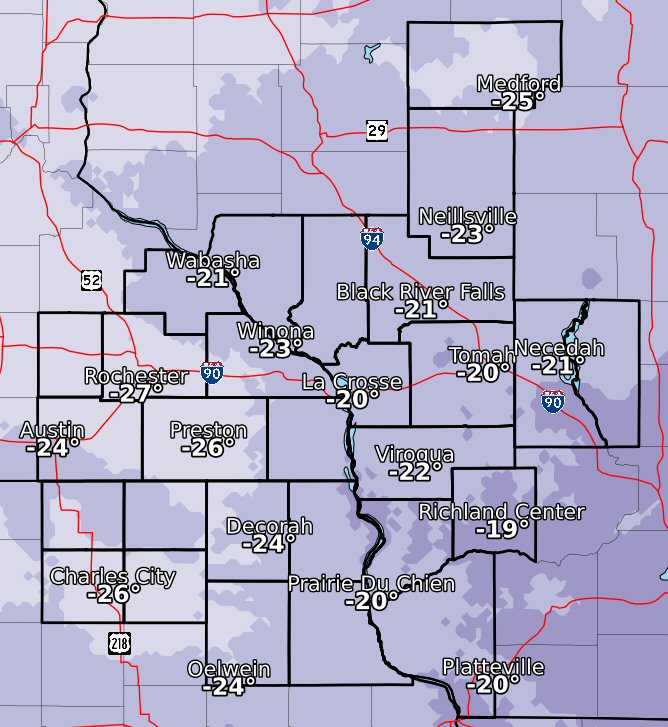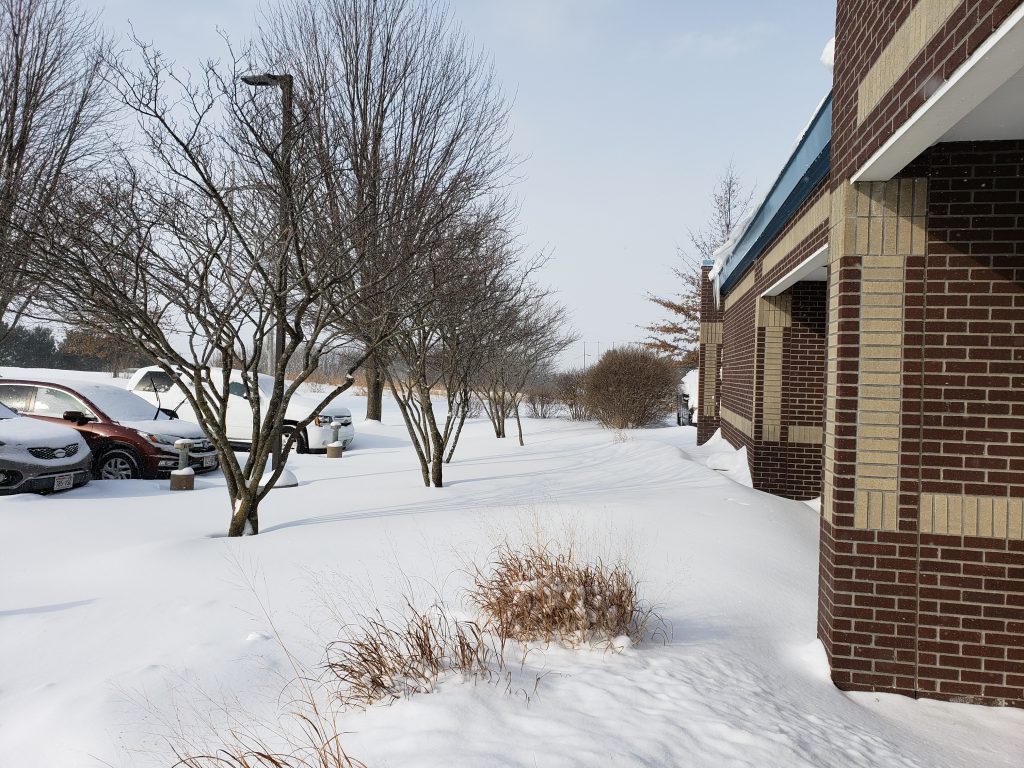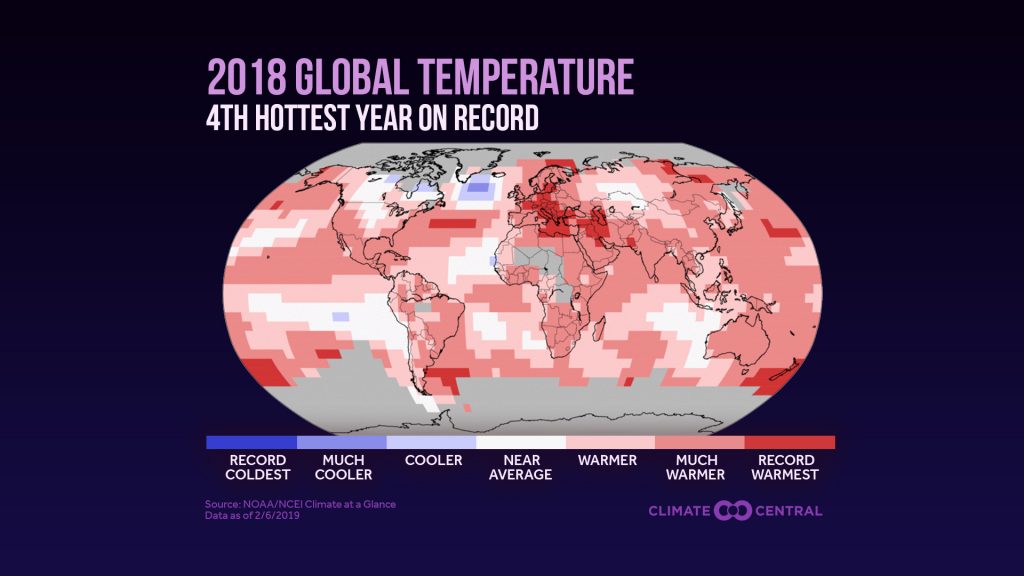News of Heat in a Cold Spell: Fayette County, 2019
Fayette county, Iowa

On January 30, 2019, the Oelwein Daily Register was reporting that the polar vortex—the cold air that ought to be circling the North Pole—was bringing temperatures of more than 20 degrees below zero in a brisk wind. The week before “a complex weather system brought multiple bouts of accumulating snow to the region” including southern Wisconsin, eastern Iowa, and northern Illinois.” Freezing drizzle first glazed the area and then the snow followed. “This system was challenging to forecast as it had various pieces, and their interaction ultimately determined the snow totals across the area.” In the end Fayette County generally saw two inches of snow while Guttenberg in neighboring Clayton County saw five.

LaCrosse, WI
Image Source: NWS
The next week, on February 5-7, a winter storm delivered prolonged precipitation to the region. Sleet and snow, a “wintry mix,” began the sequence, followed by a night of drizzling rain. This turned to snow by mid-afternoon, heavy snow in some bands of the region. As the snow diminished, the wind increased, “becoming strong and gusty from the northwest.” This reduced visibility in areas of southeast Minnesota and northeast Iowa to under a mile—dangerous for drivers of quick-moving cars and trucks, for sure, but nothing like the loss of visibility 150 years earlier that saw people lost in white-outs just yards from their front doors.
Winter was not yet done with Fayette County. On February 23 and 24, a strong winter storm arrived with heavy snow and very strong winds, earning it the descriptor “blizzard.” It started as rain, then wintry mix but gradually became snow west to east. In some locations, the snow came down fast—1-3 inches per hour. Again, as the snow was ending, the wind was ramping up. Sustained winds of 30 miles per hour and gusting up to 55 mph persisted through the area caused drifting, white-out conditions, and numerous road closures.

While Fayette County residents were shoveling snow and pushing cars out of drifts, the U.S. National Oceanic and Atmospheric Administration and its National Weather Service released the report on global temperatures for the year 2018. The details are worthy of attention, but the bottom line of the report was that 2018 was, globally, the fourth hottest on record. To date, the Earth’s ten warmest years on record, in order, are 2016, 2015, 2017, 2018, 2014, 2010, 2005, 2013, 2009, 1998. An image of the globe, with Fayette County in context, shows where the heat has been especially elevated and where not, on land and in the oceans.
Sources: on-line: “Winter Storm of January 22-23, 2019,” “Winter Storm of February 6-7, 2019,” “Blizzard, Winter Storm of February 23-24, 1019,” NOAA/National Weather Service; Chris Baldus, “Oelwein Grapples with Polar Vortex,” Oelwein Daily Register, January 30, 2019; “The Ten Hottest Global Years on Record,” Climate Central, February 6, 2019.
